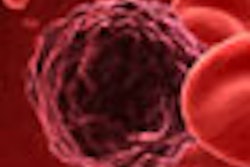Photodynamic therapy (PDT) has been shown to be effective as a curative therapy for early cancers of the head and neck, according to research presented at the recent International Photodynamic Association World Congress in Innsbruck, Austria.
Researchers from Ondine Biomedicalpresented two studies at the conference. In the first, 469 patients with various neoplastic diseases of the head and neck were treated with PDT with follow-up time of up to 250 months. Patients with primary or recurrent carcinoma in situ and T1 carcinomas responded after one PDT treatment, and 88% remained free of the disease, according to the researchers.
The second study focused on the use of PDT to downregulate MMP-9 gene expression in cell cultures of precancerous leukoplakia and oral squamous cell carcinoma. MMP-9 is expressed by squamous cell carcinomas of the head and neck, and is one of the factors responsible for the ability of these cancers to invade into tissue and also to spread to other tissues.
After one treatment of methylene blue PDT, gene expression of MMP-9 was significantly decreased in both the precancerous leukoplakia cells and the oral squamous cell carcinoma cells. This work demonstrated that methylene blue mediated PDT can downregulate proteins that promote the spreading of head and neck carcinoma, therefore potentially reducing the ability of these cancers to invade tissue and spread, the researchers noted.
"These abstracts clearly confirm a role of PDT in the treatment of head and neck cancer," stated Carolyn Cross, chairman and CEO of Ondine, in a press release.



















